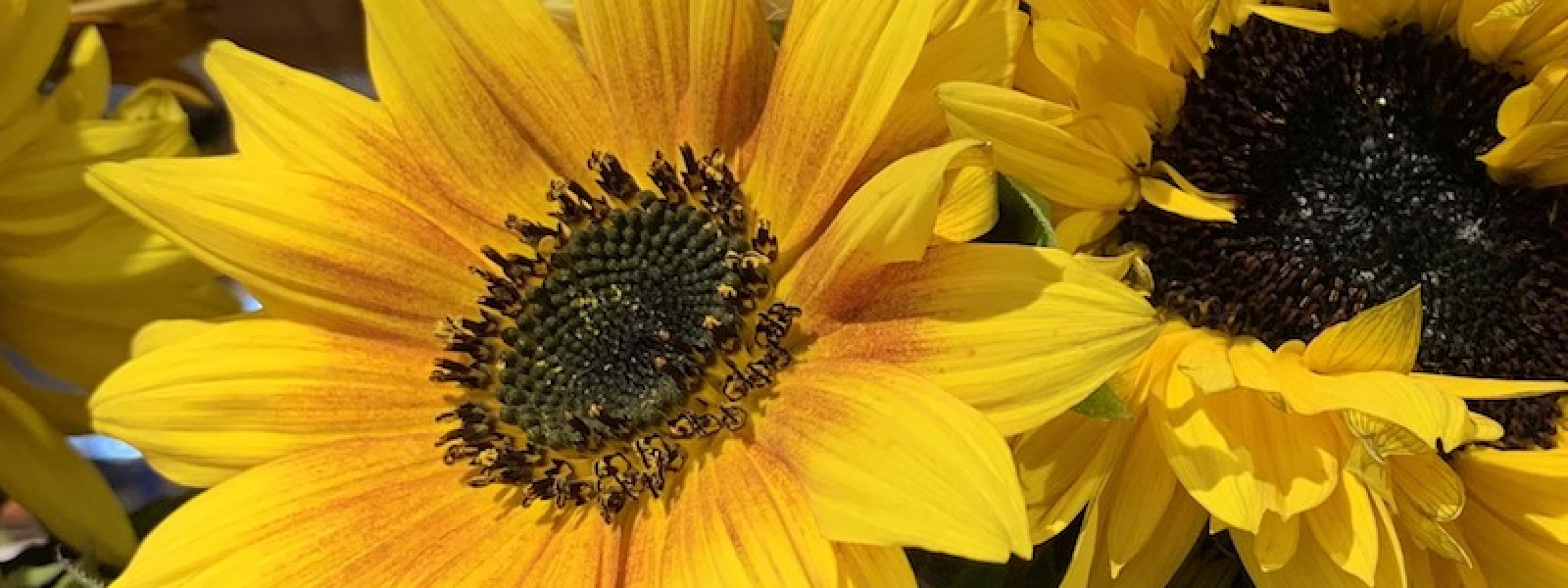Behind the Bloom
The roses, carnations, gerbera daisies, chrysanthemums, and baby’s breath that you find in florist shops and grocery stores most likely came from South America. Before 1960 the majority of cut flowers were grown domestically: gladiolus and chrysanthemums in Florida; carnations and roses in Colorado and California. In 1991, trade agreements with Colombia eliminated import duties on cut flowers. This plus an ideal climate for growing flowers and close proximity to Miami led to the development of Colombia as a major cut flower exporter. By 2003, the U.S. was importing 2 billion blooms every year and had seen a dramatic decrease in the domestic cut flower industry.
Most commercial flower growers rely on seedlings and cuttings developed in the Netherlands. These flowers are grown in greenhouses where conditions can be controlled for ideal light, temperature and moisture. After being cut, flowers must be refrigerated at 34 degrees to halt decomposition and wilting. A refrigerated supply chain from farm to truck to airplane allows flowers that are grown 2,400 miles away to be found in your local Hannaford’s.
Not only is this process very resource intensive, there is also a lack of government oversight for foreign flower farms. Farm workers work long hours for low wages often doing repetitive tasks that can cause injury. Liberal applications of chemical pesticides, fungicides, and fertilizers are prevalent. As consumer awareness has grown, there are farms adapting better growing and labor practices. When purchasing, customers should seek out flowers that are grown in a sustainable manner and are certified by BloomCheck (for U.S. Growers), Rainforest Alliance, or Veriflora.
However, the easiest way to purchase sustainable flowers is to support small flower farms. As the U.S. flower industry shrank, it left space for smaller growers to enter the market. You won’t find roses for sale at your local farmers market but you will find sturdier blooms like sunflowers, zinnias, statice, celosia, rudbeckia, gladiolas and many more. Michelle and Marnie manage our cut flower garden, and in the 1.3 acres we grow 100 + varieties of flowers. How’s that for diversity!
This year we have irrigated the flower field twice. Our 5-person team starts the flowers from seed beginning in February and manage everything by hand. Our flowers are grown without any pesticides, herbicides, or fungicides and go straight from our field to the farmstand and farmers markets. Pick up a bouquet anytime or create your own unique arrangement. The entire field is yours to explore and get creative with.








